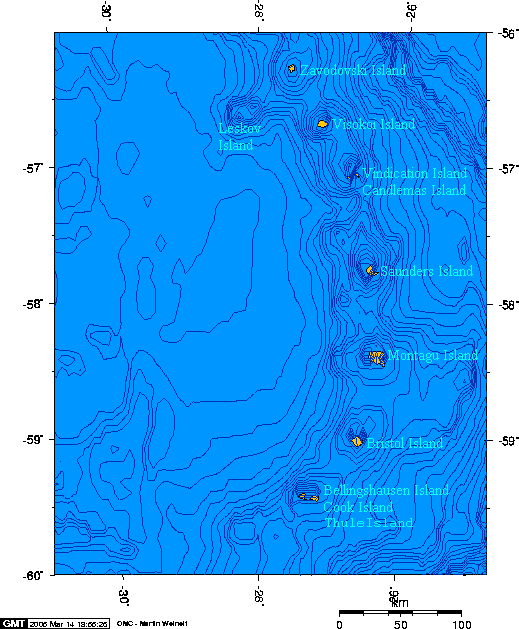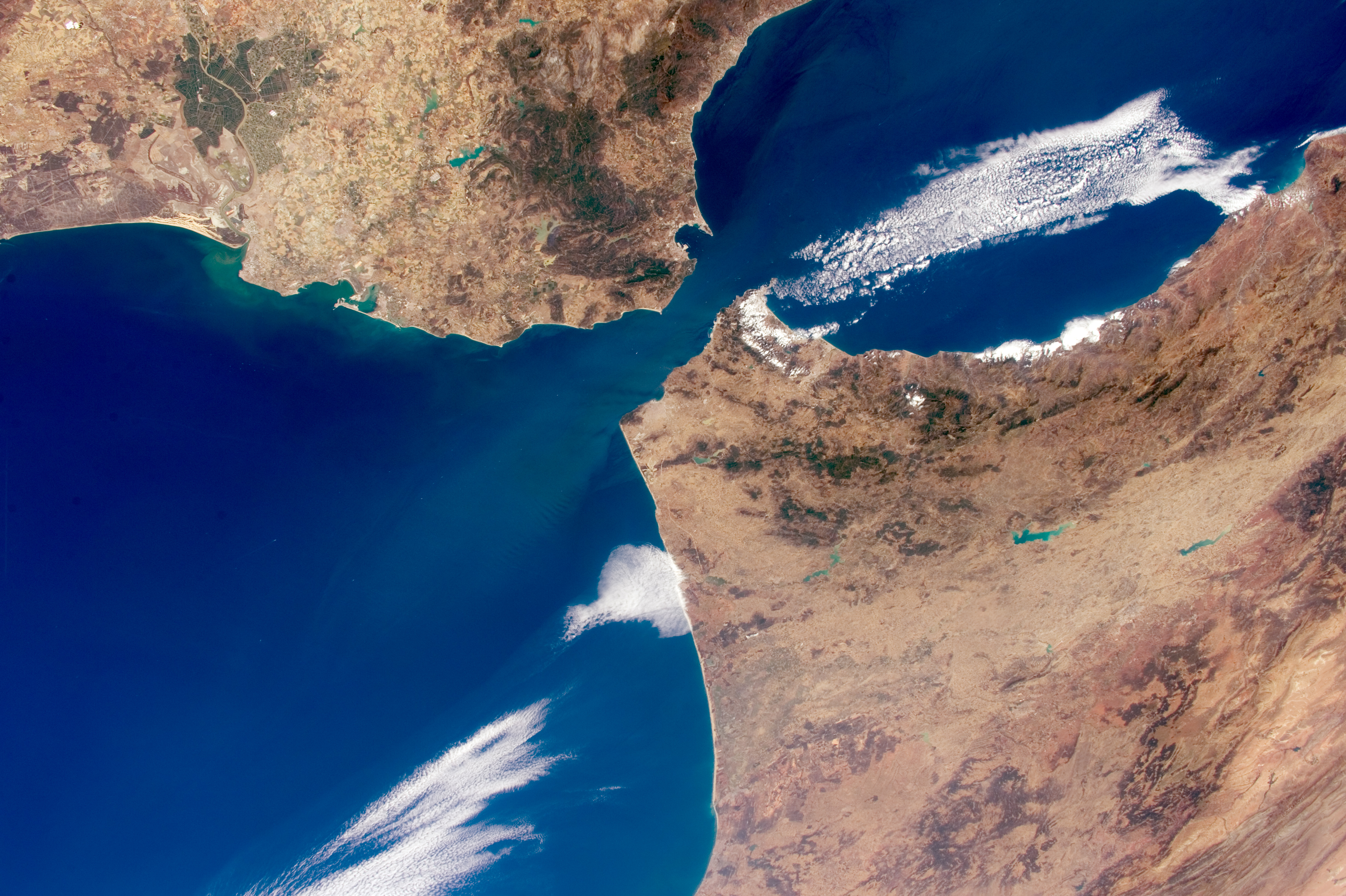|
Maurice Channel
Maurice Channel () is a strait wide between Bellingshausen Island and Cook Island, in the South Sandwich Islands off Antarctica. In 1820, Fabian Gottlieb von Bellingshausen indirectly indicated the existence of the strait by describing Southern Thule as consisting of one high rock and three small islands. The strait was charted in 1930 by Discovery Investigations personnel on the '' Discovery II'' and named for Henry Gascoyne Maurice, a member of the Discovery Committee The Discovery Committee was a popular name for the Interdepartmental Committee for the Dependencies of the Falkland Islands established by the British Government to carry out scientific investigations (which became known as ‘Discovery Investigati .... References Straits of subantarctic islands Bodies of water of South Georgia and the South Sandwich Islands {{SouthGeorgia-geo-stub ... [...More Info...] [...Related Items...] OR: [Wikipedia] [Google] [Baidu] |
Bellingshausen Island
Bellingshausen Island is one of the most southerly of the South Sandwich Islands, close to Thule Island and Cook Island, and forming part of the Southern Thule group. It is named after its discoverer, Baltic German-Russian Antarctic explorer Fabian von Bellingshausen (1778–1852). The island is a basaltic andesite stratovolcano, and the latest crater, about across and deep, formed explosively some time between 1968 and 1984. Highest point is Basilisk Peak at . Its southeast point is called Isaacson Point; first charted by Discovery Investigations personnel on the '' Discovery II'' in 1930 and named for Ms. S.M. Isaacson, an assistant to the staff of the Discovery Committee. See also * Hardy Point * List of Antarctic and sub-Antarctic islands * Salamander Point Salamander Point () is the northern point of Bellingshausen Island, South Sandwich Islands. This feature was named North Point during the survey of the island from RRS ''Discovery II'' in 1930, but the name ... [...More Info...] [...Related Items...] OR: [Wikipedia] [Google] [Baidu] |
Cook Island, South Sandwich Islands
Cook Island is the central and largest island of the Southern Thule island group, part of the South Sandwich Islands in the far south Atlantic Ocean. Southern Thule was discovered by a British expedition under Captain James Cook in 1775. Cook Island was named for Cook by a Russian expedition under Fabian Gottlieb von Bellingshausen, which explored the South Sandwich Islands in 1819–1820. The island was surveyed in 1930 by Discovery Investigations (DI) personnel on '' Discovery II'', who charted and named many of its features. Other names were later applied by the United Kingdom Antarctic Place-Names Committee (UK-APC). Geography Cook Island measures about wide. It is heavily glaciated and uninhabited. Its highest peak, Mount Harmer, rises to . Mount Holdgate rises at the southeast end of the island. Working clockwise from the northwest, the following points are found on the island's coast. All were named by DI personnel unless otherwise specified. Resolution Point is a ... [...More Info...] [...Related Items...] OR: [Wikipedia] [Google] [Baidu] |
South Sandwich Islands
) , anthem = "God Save the King" , song_type = , song = , image_map = South Georgia and the South Sandwich Islands in United Kingdom.svg , map_caption = Location of South Georgia and the South Sandwich Islands in the southern Atlantic Ocean , mapsize = 255px , subdivision_type = Sovereign state , subdivision_name = , established_title2 = Separation from Falkland Islands , established_date2 = 3 October 1985 , official_languages = English , demonym = , capital = King Edward Point , coordinates = , largest_settlement = capital , largest_settlement_type = largest settlement , ethnic_groups = , ethnic_groups_year = , government_type = Directly administered dependency under a constitutional monarchy , leader_title1 = Monarch , leader_name1 = Charles III , leader_title2 = Commissioner , leader_name2 = Alison Blake , national_representation = Government of the United Kingdom , national_representation_type1 = Minister , national_representation1 = Zac ... [...More Info...] [...Related Items...] OR: [Wikipedia] [Google] [Baidu] |
Fabian Gottlieb Von Bellingshausen
Fabian Gottlieb Thaddeus von Bellingshausen (russian: Фадде́й Фадде́евич Беллинсга́узен, translit=Faddéy Faddéevich Bellinsgáuzen; – ) was a Russian naval officer, cartographer and explorer, who ultimately rose to the rank of admiral. He participated in the first Russian circumnavigation of the globe, and subsequently became a leader of another circumnavigation expedition that discovered the continent of Antarctica. Like Otto von Kotzebue and Adam Johann von Krusenstern, Bellingshausen belonged to the cohort of prominent Baltic German navigators who helped Russia launch its naval expeditions. Bellingshausen was born on Osel Island. He started his service in the Russian Baltic Fleet, and after distinguishing himself joined the first Russian circumnavigation of the Earth in 1803–1806, serving on the merchant ship ''Nadezhda'' under the captaincy of Adam Johann von Krusenstern. After the journey, he published a collection of maps of ... [...More Info...] [...Related Items...] OR: [Wikipedia] [Google] [Baidu] |
Southern Thule
Southern Thule is a collection of the three southernmost islands in the South Sandwich Islands: Bellingshausen, Cook, and Thule (Morrell). The island group is barren, windswept, bitterly cold, and uninhabited. It has an extensive exclusive economic zone rich in marine living resources managed as part of the SGSSI fisheries. The Admiralty's ''Antarctic Pilot'' says that Southern Thule is part of an old sunken volcano, and is covered with ash and penguin guano. There are seals, petrels, and a bank of kelp just offshore, especially around a small inlet on Morrell called Ferguson Bay. History The island group was first sighted in 1775 by the expedition of James Cook, who named it Southern Thule because it seemed to lie at very much the extreme end of the world (see Ultima Thule). It was further explored in 1820 by Fabian Gottlieb von Bellingshausen who established that it consisted of three separate islands. The Southern Thule territory has been administered by the ... [...More Info...] [...Related Items...] OR: [Wikipedia] [Google] [Baidu] |
Discovery Investigations
The Discovery Investigations were a series of scientific cruises and shore-based investigations into the biology of whales in the Southern Ocean. They were funded by the British Colonial Office and organised by the Discovery Committee in London, which was formed in 1918. They were intended to provide the scientific background to stock management of the commercial Antarctic whale fishery. The work of the Investigations contributed hugely to our knowledge of the whales, the krill they fed on, and the oceanography of their habitat, while charting the local topography, including Atherton Peak. The investigations continued until 1951, with the final report being published in 1980. Laboratory Shore-based work on South Georgia took place in the marine laboratory, Discovery House, built in 1925 at King Edward Point and occupied until 1931. The scientists lived and worked in the building, travelling half a mile or so across King Edward Cove to the whaling station at Grytviken to work ... [...More Info...] [...Related Items...] OR: [Wikipedia] [Google] [Baidu] |
RRS Discovery II
RRS ''Discovery II'' was a British Royal Research Ship which, during her operational lifetime of about 30 years, carried out considerable hydrographical and marine biological survey work in Antarctic waters and the Southern Ocean in the course of the Discovery Investigations research program. Built in Port Glasgow, launched in 1928 and completed in 1929, she was the first purpose-built oceanographic research vessel and was named after Robert Falcon Scott's 1901 ship, RRS ''Discovery''. Career The ship's maiden voyage took place from December 1929 to May 1931 and consisted of a hydrographic survey of the South Sandwich Islands. From October 1932 until May 1933 she operated in the Antarctic, calling at South Africa, Australia and New Zealand. Similar voyages took place from 1934 to 1939 during which she supplied the British Graham Land expedition. Her last voyage before the onset of war was from September 1937 to May 1939. In December 1935 and January 1936 the ship was ... [...More Info...] [...Related Items...] OR: [Wikipedia] [Google] [Baidu] |
Henry Gascoyne Maurice
Henry Gascoyen Maurice (24 May 1874, Marlborough – 12 May 1950) was President of the International Council for the Exploration of the Sea 1920–1938 and President of the Zoological Society of London 1942–1948. He also headed the Fisheries Department of the Ministry of Agriculture from 1912 and was Fisheries Secretary at the Ministry of Agriculture and Fisheries The Ministry of Agriculture and Fisheries may refer to one of several national organisations: * Danish Ministry of Food, Agriculture and Fisheries, formerly the ''Ministry of Agriculture and Fishing'' * Ministry of Agriculture (France) * Ministry o ... from 1920 until his retirement in 1938, after which he served on the White Fish Commission from its inception in 1938 until its suspension on the outbreak of war in September 1939. References * * 1874 births 1950 deaths Companions of the Order of the Bath Presidents of the Zoological Society of London People from Marlborough, Wiltshire Alumni of Lincoln Co ... [...More Info...] [...Related Items...] OR: [Wikipedia] [Google] [Baidu] |
Discovery Committee
The Discovery Committee was a popular name for the Interdepartmental Committee for the Dependencies of the Falkland Islands established by the British Government to carry out scientific investigations (which became known as ‘Discovery Investigations’) and to propose nature resource conservation and economic development policies for the Falkland Islands Dependencies. During more than 25 years (1925–51) of pioneering work, the Committee's research ships ( Robert Scott’s ship), and collected an enormous amount of oceanographic, biological, and geographical data published in 38 volumes, contributing greatly to the knowledge of the world's southern regions. Particularly extensive was the new data related to all aspects of the island of South Georgia. Among the results of the investigations was also the discovery of the natural boundary of Antarctica, the Antarctic Convergence. See also * Discovery Investigations The Discovery Investigations were a series of scientific cr ... [...More Info...] [...Related Items...] OR: [Wikipedia] [Google] [Baidu] |
United States Board On Geographic Names
The United States Board on Geographic Names (BGN) is a federal body operating under the United States Secretary of the Interior. The purpose of the board is to establish and maintain uniform usage of geographic names throughout the federal government of the United States. History On January 8, 1890, Thomas Corwin Mendenhall, superintendent of the US Coast and Geodetic Survey Office, wrote to 10 noted geographers "to suggest the organization of a Board made up of representatives from the different Government services interested, to which may be referred any disputed question of geographical orthography." President Benjamin Harrison signed executive order 28 on September 4, 1890, establishing the ''Board on Geographical Names''. "To this Board shall be referred all unsettled questions concerning geographic names. The decisions of the Board are to be accepted y federal departmentsas the standard authority for such matters." The board was given authority to resolve all unsettled q ... [...More Info...] [...Related Items...] OR: [Wikipedia] [Google] [Baidu] |
Straits Of Subantarctic Islands
A strait is an oceanic landform connecting two seas or two other large areas of water. The surface water generally flows at the same elevation on both sides and through the strait in either direction. Most commonly, it is a narrow ocean channel that lies between two land masses. Some straits are not navigable, for example because they are either too narrow or too shallow, or because of an unnavigable reef or archipelago. Straits are also known to be loci for sediment accumulation. Usually, sand-size deposits occur on both the two opposite strait exits, forming subaqueous fans or deltas. Terminology The terms '' channel'', ''pass'', or ''passage'' can be synonymous and used interchangeably with ''strait'', although each is sometimes differentiated with varying senses. In Scotland, ''firth'' or ''Kyle'' are also sometimes used as synonyms for strait. Many straits are economically important. Straits can be important shipping routes and wars have been fought for control of th ... [...More Info...] [...Related Items...] OR: [Wikipedia] [Google] [Baidu] |


.jpg)
